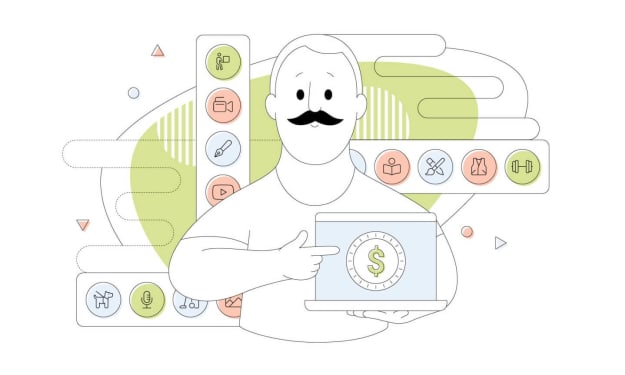
In the age of smartphones, touchscreens have become an integral part of our daily lives. These sleek glass surfaces respond to our slightest touch, allowing us to communicate, navigate, and interact with technology in ways that were once the realm of science fiction. But have you ever wondered how these touchscreens work? What's the magic behind this seemingly simple but incredibly sophisticated interaction? Let's embark on a journey of discovery, peeling back the layers to uncover the intricate technology that powers our touch-enabled world.
The Basics: Capacitive vs. Resistive Touchscreens
Before diving into the depths of touchscreens, let's start with the basics. There are primarily two types of touchscreens: capacitive and resistive.
Capacitive Touchscreens: Harnessing Electrical Charge
Capacitive touchscreens are the most common type found in modern smartphones and tablets. They work based on the principles of capacitance—the ability of certain materials to store an electrical charge. The surface of a capacitive touchscreen is made of a specialized material that can hold an electrical charge.
When you touch the screen with your finger, it causes a change in the screen's electrical field. This change is detected by sensors located at the corners of the screen or around its edges. These sensors then relay the information to the device's processor, which interprets the touch and executes the corresponding action.
Layers of Complexity: Underneath the Surface
The magic of capacitive touchscreens lies in the layers beneath the surface. Let's take a closer look at the key components that make it all possible:
1. Glass Substrate: The base layer of a capacitive touchscreen is often a thin sheet of glass. This layer provides structural support and acts as a protective surface.
2. Transparent Conductive Layer: On top of the glass, there's a transparent conductive layer made of indium tin oxide (ITO). This layer is responsible for conducting the electrical charge and detecting changes in capacitance when you touch the screen.
3. Dielectric Layer: Between the conductive layer and the glass substrate, there's a dielectric layer. This layer prevents electrical interference and helps maintain the stability of the electrical field.
4. Microscopic Grid: The transparent conductive layer is etched with a microscopic grid pattern. This grid divides the screen into small areas called "capacitors." When you touch the screen, your finger's conductive properties change the capacitance of the capacitors in that area, and this change is detected by the sensors.
5. Sensors and Controller: Sensors located at the edges of the screen or in its corners monitor the changes in capacitance. A controller processes the sensor data and determines the location and nature of the touch input.
Multi-Touch: A Symphony of Capacitance
The wonder of modern touchscreens doesn't stop at single touch detection. Multi-touch technology takes interaction to a whole new level. Whether it's pinch-to-zoom, rotating images, or swiping through menus, multi-touch enables us to use intuitive gestures to control our devices.
Multi-touch is achieved by designing the capacitive grid to detect multiple points of contact simultaneously. The controller then interprets the unique changes in capacitance patterns to understand the various gestures being performed. This intricate dance of capacitance allows us to interact with our devices in ways that were once unimaginable.
Challenges and Innovations
While capacitive touchscreens have transformed how we interact with technology, they aren't without their challenges. One common challenge is the interference caused by water or non-conductive materials. These can disrupt the electrical field and cause false touches or hinder responsiveness.
To overcome these challenges, manufacturers have introduced innovations like water-resistant coatings, palm rejection algorithms, and improved sensitivity settings. These advancements ensure that our touchscreens remain functional even in varying conditions.
Future Horizons: Beyond the Glass
The evolution of touchscreens doesn't stop here. Researchers and innovators are constantly pushing the boundaries, exploring new materials, and seeking ways to make touch interaction even more seamless.
Foldable and flexible screens, haptic feedback (providing tactile sensations when interacting with the screen), and even gesture recognition are among the futuristic concepts being explored. These developments promise to redefine how we interact with technology, making it even more intuitive and immersive.
Now Explain like I'm Three
Imagine your touchscreen as a secret agent that can feel electricity. Capacitive touchscreens are the superstars of this show. They're made with special materials that can store electrical power, just like how your toys light up when you press a button.
Now, picture this: when you press your finger onto the screen, it creates a tiny electrical change that the screen can sense. Clever sensors, like little spies, hide at the corners of the screen. They catch this electrical whisper and send it to the brainy part of your device, called the processor. This brainy buddy then figures out your touch and makes your phone dance to your command. Swipe, zoom, tap—it's like you're the conductor of a touch orchestra!
Under the Hood: The Layers that Make It Happen
Every touchscreen is like a fancy cake with layers of tech goodness:
Glass Foundation: Imagine the screen as a sturdy glass foundation. It's tough like a shield, protecting the magic inside.
Invisible Conductor: On top of the glass, there's an invisible conductor made from special stuff called indium tin oxide (ITO). It's like a magic carpet that conducts electricity.
Barrier with a Mission: Between the conductor and the glass, there's a barrier that keeps everything in line. It's like the bouncer of the electrical party, making sure things stay smooth.
Microscopic Grid: The conductor has a microscopic grid that looks like a chessboard for ants. Each square is a "capacitor" that waits for your touch. When you tap, your finger's electric dance changes the music, and sensors catch it.
Sensors & Mastermind: Hidden at the edges or corners, sensors work like spies, catching the dance of the capacitors. They send this info to the mastermind—the controller—which makes sense of the dance and turns it into action. Think of it like a secret handshake that unlocks your phone's secrets!
Summary: A Touch of Everyday Magic
The next time you tap, swipe, or pinch on your smartphone screen, take a moment to appreciate the intricate technology that makes it all possible. Beneath that smooth glass surface lies a world of microscopic grids, electrical fields, and sensors working in harmony to translate your touch into action. It's a symphony of science and engineering that has transformed the way we communicate, navigate, and experience the digital world.
About the Creator
Jaslynn
Delving into the possibilities of writing and penning my curiosities into words.






Comments
There are no comments for this story
Be the first to respond and start the conversation.